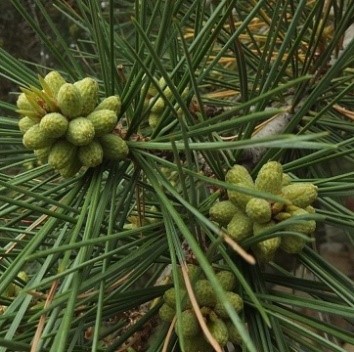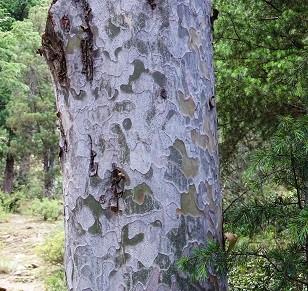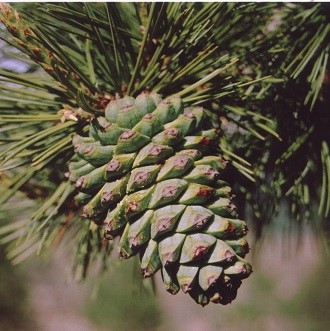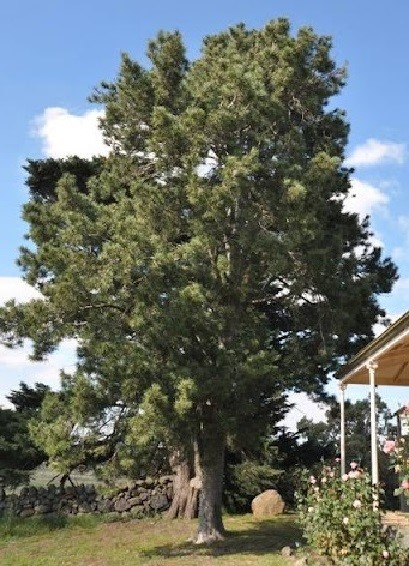Trees
Pinus gerardiana Wall. Ex Lamb.
Pinus gerardiana Wall. Ex Lamb.
Description :
A medium sized tree 12 to 18 m tall with diameters of 0.4 m. The crown
is short and rounded. The branches are flat or curved. The needles are in
threes 3.6 to 12 cm long and are dark green. It is monoecious. The male flowers
or cones are many crowded in headlike clusters. The female flowers are erect.
The cones bloom between June and July. The fruit is the female cone. As it
ripens it turns a shiny reddish-brown color, remains attached and closed. The
seed in the cone takes a full year to mature after pollution and a full 2 years
for the reproductive cycle to be completed. There are two-winged seed beneath
each cone scale. Seed is shed in September through October. The tree is
attacked by cone borers and bark beetles. Grazing and collection of the edible
seed has limited natural regeneration. It is reproduced from seed. Seeds are
low in viability. It is a slow growing tree that is adapted to harsh sites. A
tree 21.3 m tall and 1.45 m in diameter has been recorded. The future of this
valuable tree will depend on the development of protected seed sources. Grain straight,
medium fine and un-even textured. Sapwood is white to yellowish white, and
heartwood is light reddish brown to dark brown resinous. Strength moderately
hard, having specific gravity of 0.58.
Distribution :
The tree is native to the Western Himalayas, the Hindukush Mountains of
Pakistan and Afghanistan extending south to the Sulaiman range in Balochistan.
It is found in the inner dry valleys of Chitral, Kurram. Upper Swat, Astore, Shigar
and in Gilgit Baltistan. An intolerant tree that grows on a variety of soils
and textures. It prefers well drained soils and will not grow on heavy or wet
sites. It is drought hardy and is well adapted to a precipitation zone of 370
to 750 mm/yr. It prefers a semi-arid, cool temperate climate with a temperature
range of -20 to 35°C at elevations between 2000 to 3000 m. It is frost hardy
and grows in pure stand, in small groups, or as scattered individual trees.
Uses :
This
is a valuable tree for reforestation and afforestation of denuded hill sides.
Because of its ability to grow in semi-arid cold temperate climates this tree
would be ideal for reclaiming denuded areas of Balochistan, Upper Kaghan, Gilgit
and Skardu in Pakistan. Because of the value of the edible seed, natural
regeneration is almost impossible. Also used for construction, fuel, food (pine
nuts) and medicinal (pine nuts).



